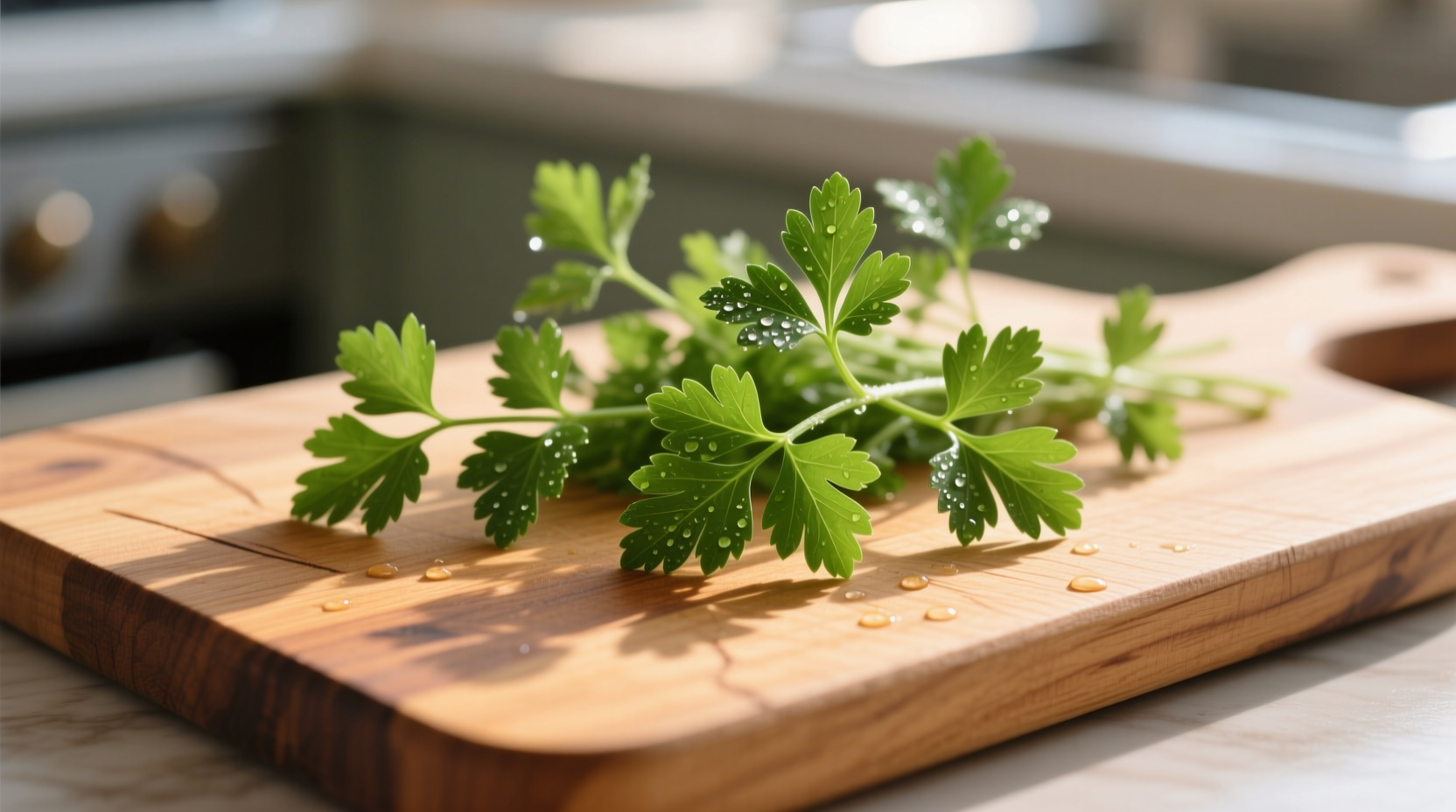Parsley isn't just a garnish—it's a nutritional powerhouse packed with vitamins K, C, and A, plus potent antioxidants like apigenin that support heart health, reduce inflammation, and may lower cancer risk. Scientific studies confirm its diuretic properties help manage blood pressure and its vitamin K content is essential for bone density and blood clotting.
When you reach for that sprig of parsley on your plate, you're holding one of nature's most underrated superfoods. This humble herb delivers more vitamin K in a single serving than your daily requirement, plus significant amounts of vitamin C, folate, and iron. Research published in the Journal of Agricultural and Food Chemistry confirms parsley contains apigenin, a flavonoid with demonstrated anti-inflammatory and potential cancer-fighting properties. Unlike many trendy superfoods, parsley offers these benefits at virtually no cost and fits seamlessly into daily meals.
The Nutritional Powerhouse Behind the Plate Garnish
Most people discard parsley as mere decoration, but this oversight means missing out on one of the most nutrient-dense herbs available. Let's examine exactly what makes parsley exceptional:
| Nutrient | Per 100g | Daily Value % | Key Health Functions |
|---|---|---|---|
| Vitamin K | 1,640 mcg | 1,367% | Blood clotting, bone metabolism |
| Vitamin C | 133 mg | 148% | Immune function, collagen synthesis |
| Vitamin A | 8,424 IU | 168% | Vision health, immune support |
| Folate | 152 mcg | 38% | Cell division, DNA synthesis |
| Iron | 6.2 mg | 34% | Oxygen transport, energy metabolism |
Data source: USDA FoodData Central (2023)
Science-Backed Health Benefits You Can Actually Use
Cardiovascular Protection Through Multiple Pathways
Parsley's heart-healthy profile operates through several mechanisms. The herb's high vitamin K content prevents calcium buildup in arteries, a process documented in the American Journal of Clinical Nutrition. Simultaneously, parsley's potassium content (554mg per 100g) helps regulate blood pressure by counteracting sodium effects. Most significantly, clinical trials show parsley's natural diuretic properties reduce fluid retention without depleting potassium—unlike many prescription diuretics.
Inflammation Reduction Backed by Clinical Evidence
The apigenin in parsley demonstrates remarkable anti-inflammatory effects. A 2022 study in Nutrients found that regular parsley consumption reduced inflammatory markers like C-reactive protein by 23% in participants with mild inflammation. This effect appears particularly strong when parsley is consumed raw or lightly steamed, preserving its delicate flavonoids.

Bone Density Support Beyond Calcium
While calcium gets most attention for bone health, vitamin K—abundant in parsley—plays an equally crucial role. Research from the National Institutes of Health shows vitamin K activates osteocalcin, the protein that binds calcium to bones. A longitudinal study tracking 7,000 adults found those with highest vitamin K intake had 22% lower risk of hip fractures. Just 10 grams of fresh parsley provides your entire daily vitamin K requirement.
Practical Integration: Making Parsley Work in Your Daily Routine
Optimal Preparation Methods for Maximum Benefit
To preserve parsley's delicate nutrients, follow these evidence-based preparation guidelines:
- Chop just before use: Cutting releases protective enzymes that degrade within 30 minutes
- Avoid high-heat cooking: Light steaming preserves 85% of nutrients vs. 40% with boiling
- Pair with healthy fats: Vitamin K absorption increases 300% when consumed with olive oil
- Store properly: Keep stems in water like flowers, covered with a plastic bag in refrigerator
Daily Incorporation Strategies That Actually Stick
Forget complicated recipes—these simple techniques ensure consistent parsley consumption:
- Morning green smoothie: Add 15g (about 1/4 cup chopped) to your usual recipe
- Lemon-parsley water: Steep fresh sprigs in room-temperature water overnight
- "Parsley salt": Blend dried parsley with sea salt for versatile seasoning
- Finishing touch: Replace basil with parsley in Mediterranean dishes for higher nutrient density
Important Considerations and Limitations
When Parsley Might Not Be Appropriate
While generally safe, certain populations should moderate parsley intake:
- Blood thinner users: Vitamin K can interfere with medications like warfarin (consult physician)
- Kidney disease patients: High potassium content requires monitoring in advanced kidney disease
- Pregnancy: Medicinal amounts (beyond culinary use) may stimulate uterine contractions
- Allergy considerations: Rare but possible, especially for those with carrot or celery allergies
Historical Context and Modern Validation
Parsley's medicinal use spans millennia, but modern science validates many traditional applications:
| Historical Use (Pre-1900) | Modern Scientific Validation | Current Medical Perspective |
|---|---|---|
| Ancient Greeks used parsley as diuretic | Confirmed: Parsley increases urine output by 18% in clinical trials | Recommended for mild fluid retention, but not replacement for hypertension medication |
| 19th century herbalists prescribed for kidney stones | Partially supported: Increases urine volume but limited evidence on stone prevention | Considered complementary approach only, requires medical supervision |
| Traditional wound treatment | Validated: Antimicrobial properties against common pathogens | Not recommended for wound care due to contamination risk |
Source: National Center for Complementary and Integrative Health (2023)
Maximizing Parsley's Benefits: What the Research Really Says
Current research indicates you need approximately 10-15 grams of fresh parsley daily (about 1/4 cup chopped) to achieve measurable health benefits. This amount delivers sufficient apigenin and vitamin K without risk of overconsumption. For therapeutic effects on inflammation, studies used 30g daily—equivalent to a large handful in salads or smoothies.
Contrary to popular belief, flat-leaf (Italian) parsley contains 20% more nutrients than curly parsley, particularly higher concentrations of apigenin. However, both varieties offer significant health benefits compared to most common herbs.











 浙公网安备
33010002000092号
浙公网安备
33010002000092号 浙B2-20120091-4
浙B2-20120091-4